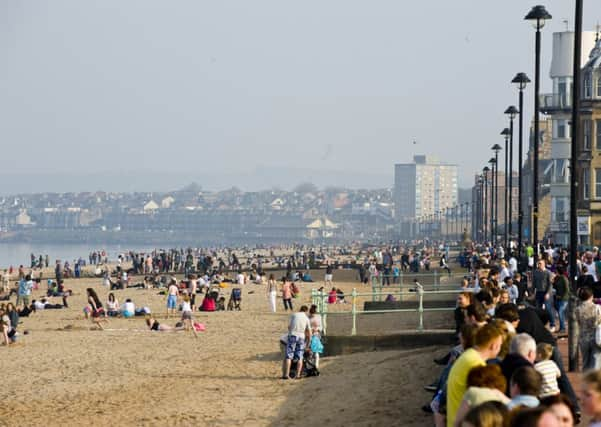New Scots research into sunlight health risks


The lack of exposure to sunlight during the winter months has, in some studies, been linked to vitamin D deficiency and immune-mediated diseases such as multiple sclerosis.
The North of Scotland has a high prevalence of MS and a recent study found that people on the Orkney Islands have the highest rate of the disease in the world. Other countries at northerly latitudes, such as Canada, also have a high MS prevalence.
Advertisement
Hide AdAdvertisement
Hide AdBut now researchers at Aberdeen University are seeking to recruit 50 volunteers for a new study to discover whether vitamin D supplements and artificial UVB light, which will mimic the rays of sunlight, could be used to combat the possible health risks on the body’s immune system of not getting enough exposure to the sun.
‘Improve health of communities’
Anthony Ormerod, Professor of Dermatology at the university, said: “The problem with being so far north of the equator is the lack of sunlight and there is a seasonal incidence with certain diseases which increases the further you are from the equator.
“Sunlight is our main source of vitamin D but the further you are from the equator the less sun exposure you get. This is a particular problem during winter because the useful UVB rays are filtered out and don’t reach us. Unless we take a winter sunshine holiday or vitamin D supplements, we are reliant on the stores of vitamin D that has been built up by the body during the rest of the year.”
Prof Ormerod added: “We’re hoping our study will point us towards a way in which we could help improve the health of the community. It’s about looking at preventative medicine to help with the disadvantage of not getting enough sun during the winter months.”
Professor Helen Macdonald, another member of the research team, said: “We want to see whether giving volunteers vitamin D or artificial UVB light can counter the problem of lack of sunlight and improve our health. Vitamin D is important for bones and vitamin D deficiency has also been linked with cancer, cardiovascular disease and autoimmune diseases such as MS.”
Prof Macdonald, who is Professor of Nutrition and Musculoskeletal Health at Aberdeen University, explained: “Volunteers will be randomised to get either vitamin D tablets containing the same levels that you get in vitamins you buy over-the-counter, or they will be given light therapy.
“Those getting UVB will be given doses that are the same level you would get on a sunny day in Aberdeen during the summer. Blood samples will also be taken to enable us to see what is happening in the body.”
Highest MS rate in the world
A study published last October showed that Scotland has amongst the highest prevalence of MS in the world, with around 10,000 sufferers living in the country.
Advertisement
Hide AdAdvertisement
Hide AdA map, produced by the Multiple Sclerosis International Federation, showed that the prevalence of MS in Scotland was 188 cases per 100,000 people in the population, slightly behind Northern Ireland at 190 but higher than the 138 cases in Wales and 162 in England.
In 2012 a report by scientists at Edinburgh University found that one in every 170 women in the Orkney Islands suffered from the disease. The prevalence of the disease on Orkney was 402 per 100,000.
The Edinburgh researchers said that an inherited genetic weakness, yet to be discovered by scientists, as well as limited exposure to the sun, could be at least partly to blame.
Multiple sclerosis is a disease affecting nerves in the brain and spinal cord, causing problems with muscle movement, balance and vision. MS causes myelin, a layer that insulates nerve cells in the brain, to break down, weakening and slowing the messages sent through nerves cells from the brain to other parts of the body.
SEE ALSO: